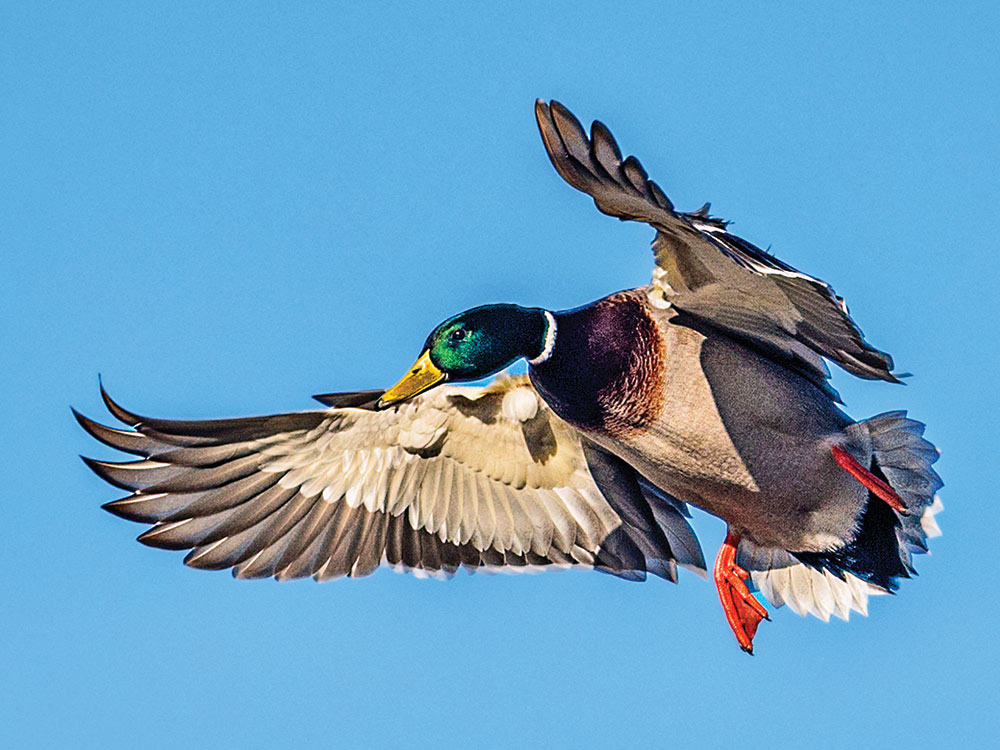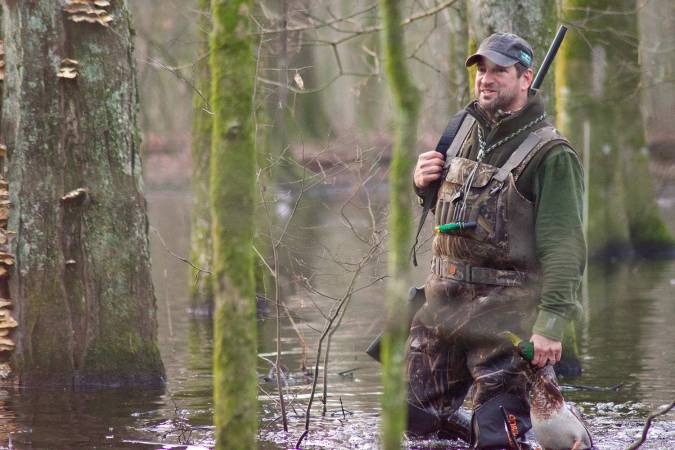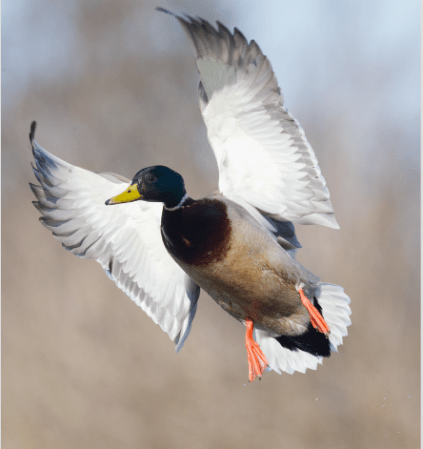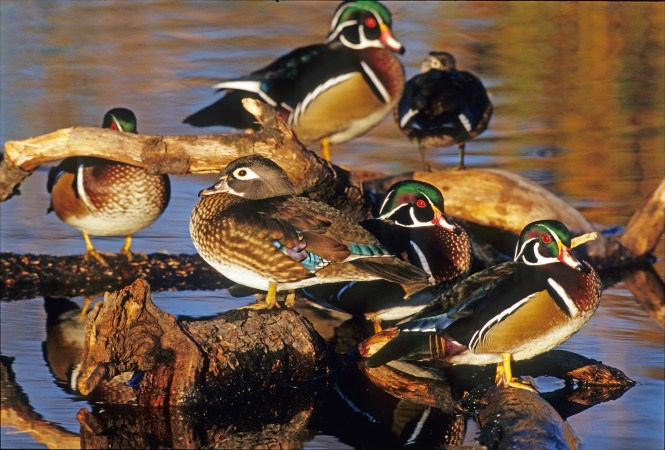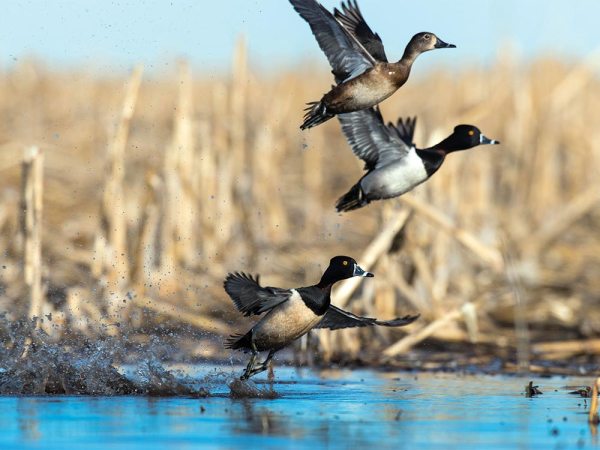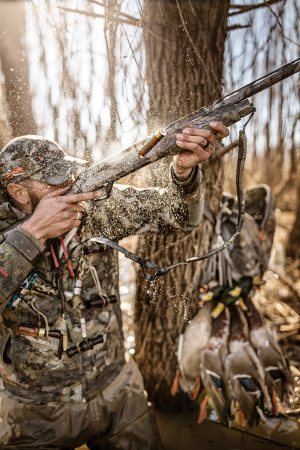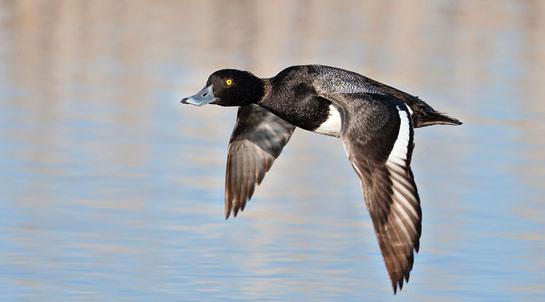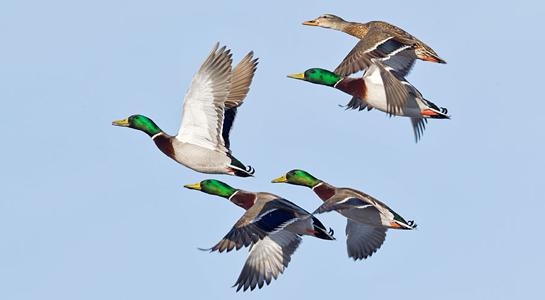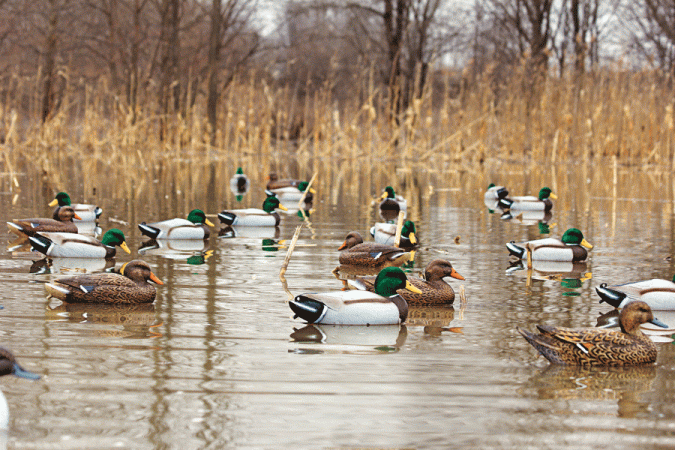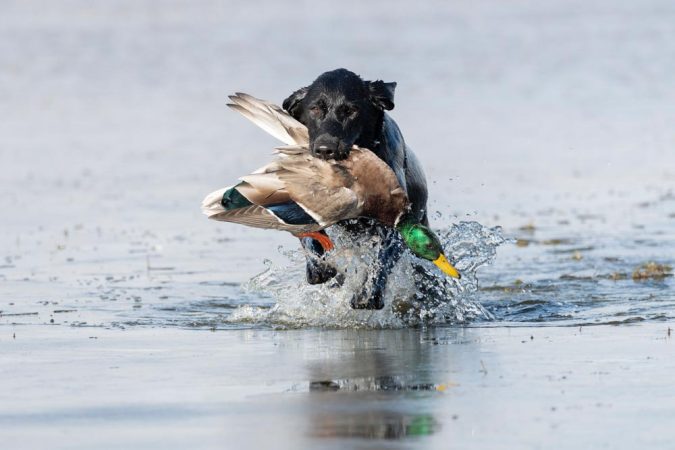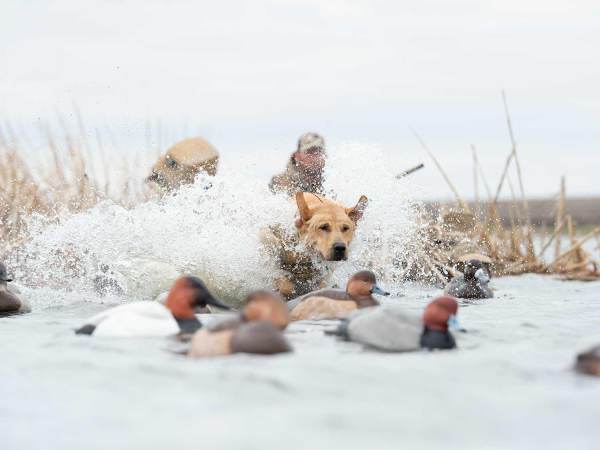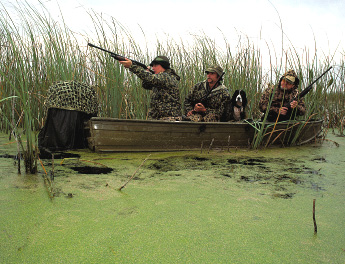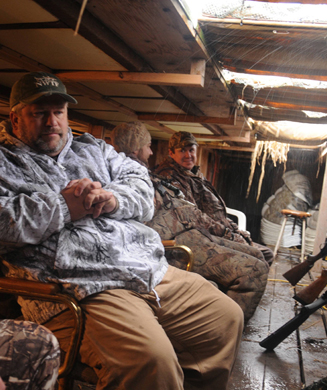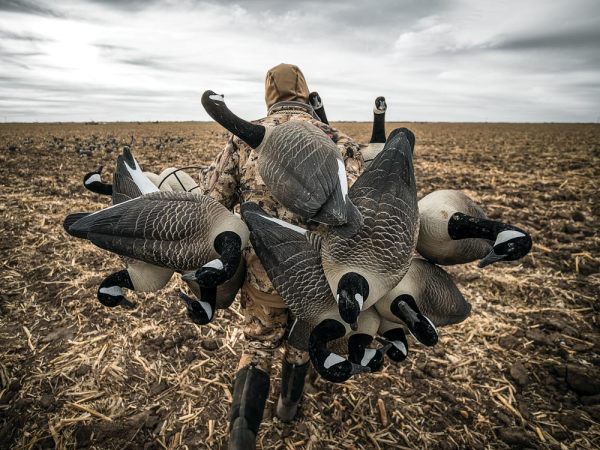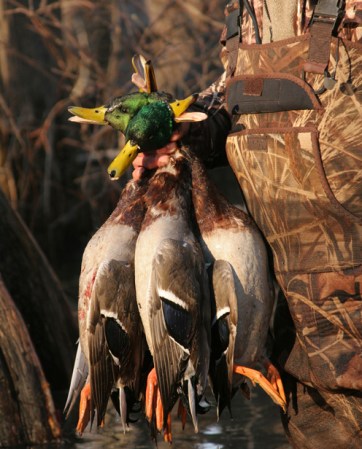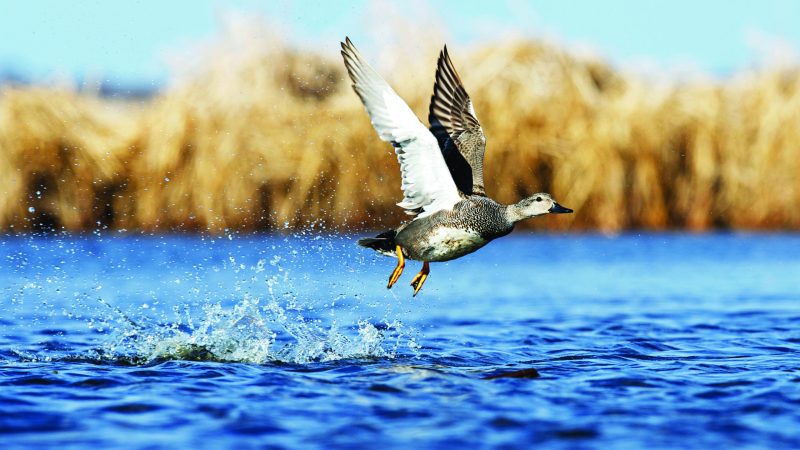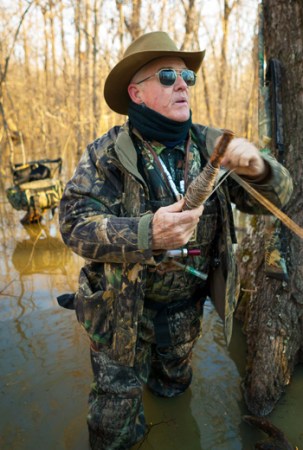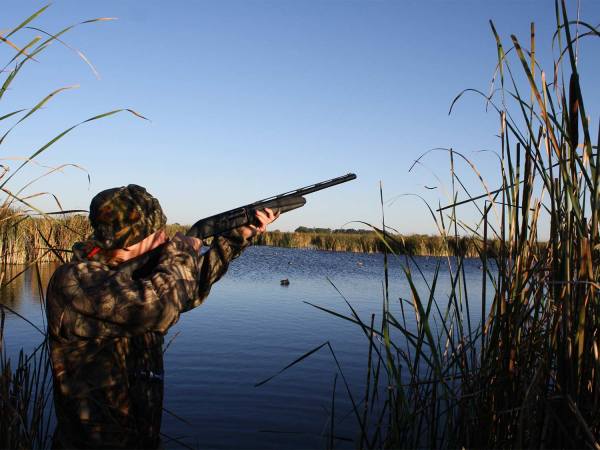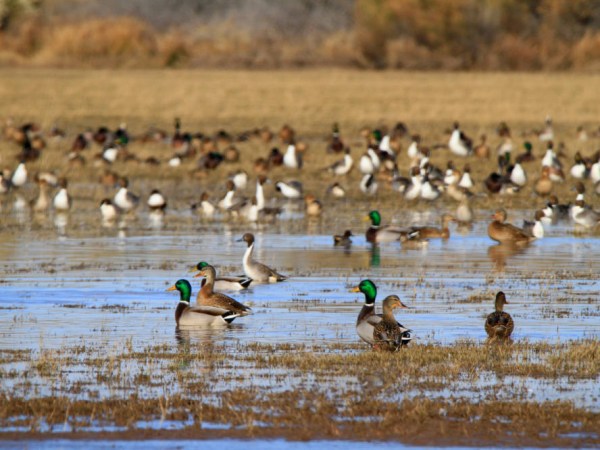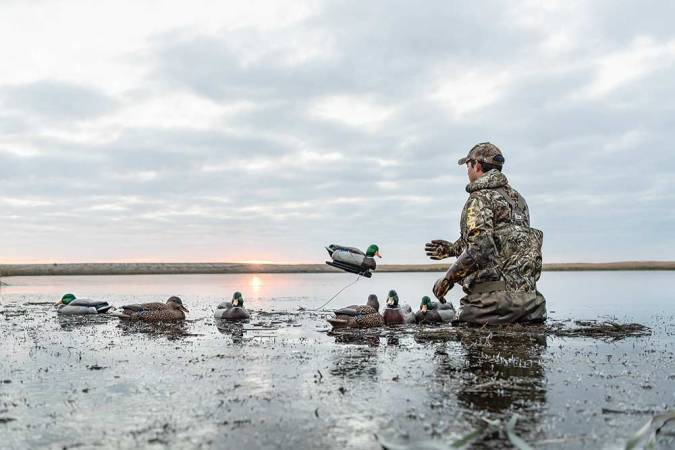Hunting acrobatic teal, early-season geese, and beautifully plumed wood ducks is great. But for most of us, real waterfowling starts when the weather turns cold—when those big northern greenheads start making their way south. They show up in waves, bombing backwaters and picking through farm fields. And then, they’re gone. Here’s how to make the most of the migration.
1. Time the Flight
The first step to success is being in the right spot during the peak of the migration. There are two types of mallard migrants: those that trickle down throughout the season and the cold-weather holdouts.
If you scout diligently, you can have good shoots on mallards that push through your area ahead of the main migration. Just make sure to keep notes on the dates and weather conditions of your best hunts, because this intel will be helpful in the years to come.
However, the major movement—and the days duck hunters’ dreams are made of—happen just ahead of (and during) major cold fronts and big winds out of the Northwest. Mallards are among the last ducks to migrate south ahead of winter’s bite. The biggest and final push of greenheads happens even after the hardiest of the diving ducks—bluebills and canvasbacks—have long since passed through.
To hit it just right, watch online weather maps as if meteorology were your new career. Note where nighttime temperatures are falling into the mid- to lower-20s and teens. Those temps will freeze shallow waters, and mallards stay just ahead of the ice. Watch the snow line too (NOAA has a good map for this). More than a couple of inches on the ground—covering corn, soybeans, or wheat stubble—will move mallards down toward uncovered food sources.
The best scouting of all comes from boots on the ground. If you or your hunting partners can’t get out on a given day to scout yourselves, then check in with landowners and buddies who live just a little north of you along the flyway. Knowing what the activity is like ahead of you will help you anticipate action in the days to come. Lastly, don’t put too much stock in online forums. Real-world information always trumps what an anonymous source claims online.
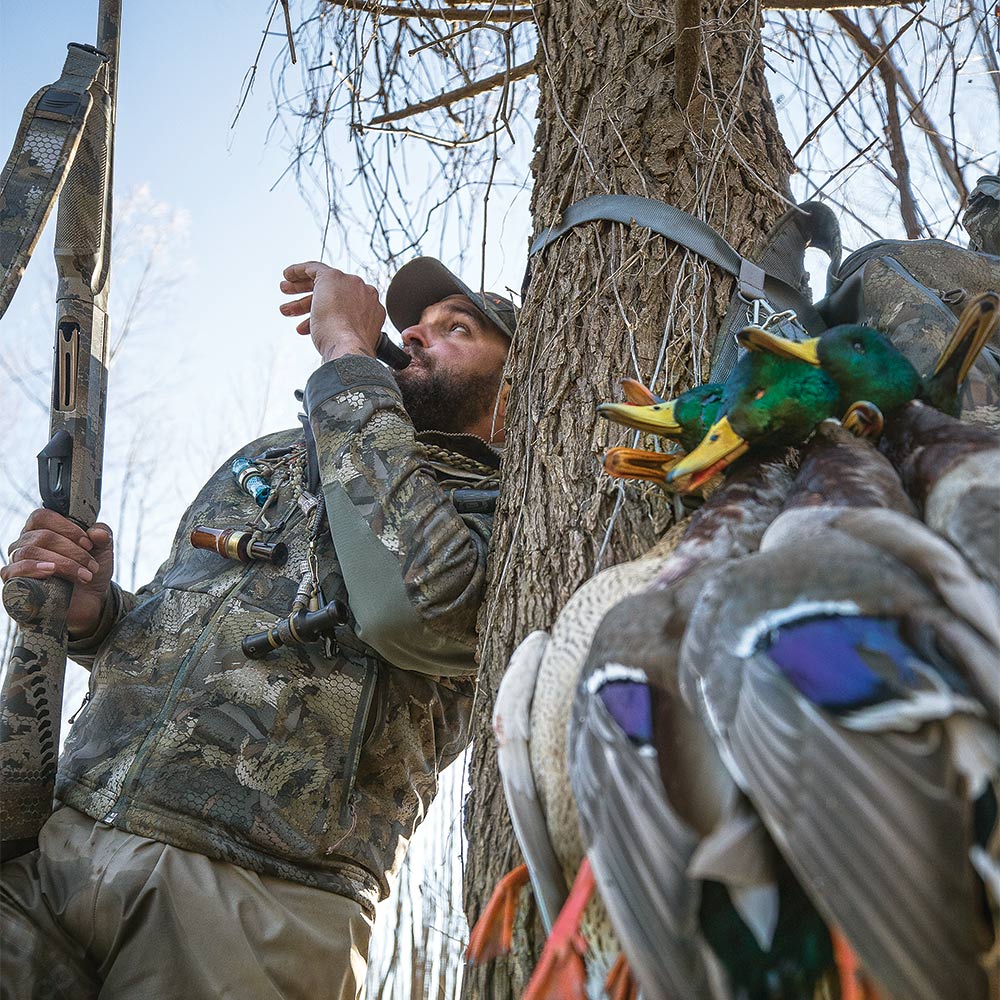
2. Use Fewer (and More Realistic) Dekes
It’s tempting to throw a party for migrating mallards, tossing out four or five dozen decoys (or more) in hopes of gaining the birds’ attention. Resist the urge to set a rig that the ducks have already seen. Instead, use 6 to 12 well-spread blocks to invite birds in.
Since you’ll be using fewer decoys, invest in better ones, emphasizing quality over quantity. Migrating ducks have been looking at sheeny, shiny, painted decoys for a month or more. Instead, use ultra-realistic flocked decoys. I like Dakota Decoys’ X-Treme Fully Flocked Mallard Floaters. ($190 per 12)
3. Add Confidence Decoys
Include two to six Canada goose decoys in your spread. Mallards trust geese, and the large goose decoys’ profile will call attention to your smaller spread.
Also, put a little white into your spread to pull in birds on gray days. Accomplish this by adding a trio of drake bufflehead dekes to the edge of your setup. Mallards are used to being around these tough little ducks when bad weather hits.
4. Find the Right Water
Before the freeze, target small out-of-the way pockets: forgotten backwaters, hidden horseshoe lakes, and secret sloughs. These spots offer the kind of refuge that migrating mallards are looking for. When these little spots lock up with ice, it’s time to hit the river. Mallards love loafing in eddies that have just enough moving water to keep from freezing. Place a few full-body decoys on shore to replicate ducks at rest.
Read Next: Duck Hunting—Tips for Midday Mallards
5. Take the Field
Or you can forgo the water and try field-hunting hungry mallards. The birds need lots of high-carb grain forage to put on the fat they’ll need over the next leg of their journey. If you find a hot field, you can almost do no wrong.
Full-body Canada goose decoys effectively bring in mallards. In a field setup, you want a large decoy spread, so in a pinch, you can mix in duck floaters (and even goose floaters) with your full-body goose dekes. Where legal, use a spinning-wing decoy or two. Then, just make sure you’re well hidden, and wait for the swarms of green.
